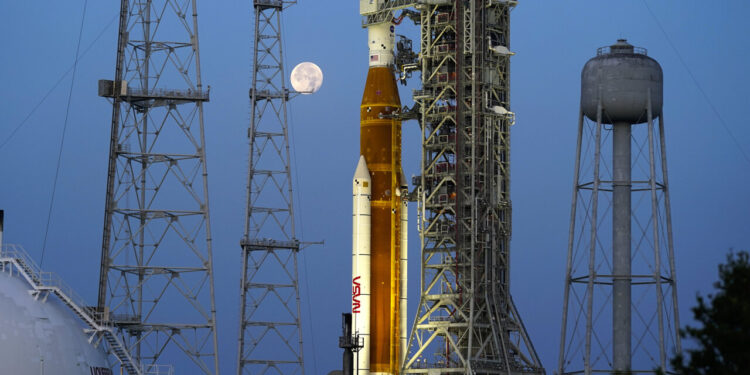When NASA astronauts finally return to the moon for the first time in half a century, their safe journey will depend on rocket engines manufactured in a Redmond facility that exemplifies Washington’s growing role in the modern space economy. The L3Harris plant produces 32 specialized engines for each of the first three Artemis missions, making the state an indispensable partner in humanity’s next chapter of lunar exploration.
The engines serve a critical function that goes far beyond simple propulsion. According to Kathryn Luczek, L3Harris Orion Deputy Program Manager, these components provide the orbital maneuvering system that allows crew modules to navigate safely back to Earth. Without them, astronauts would have no way to return home, making the Redmond facility’s precision manufacturing essential to mission success and crew survival.
This represents a significant shift from the Apollo era, when space exploration relied heavily on facilities concentrated in traditional aerospace centers. Washington’s emergence as a key player reflects both the state’s advanced manufacturing capabilities and the distributed nature of modern space programs that leverage expertise from across the nation. The presence of companies like Boeing, Blue Origin, and now L3Harris demonstrates how the Pacific Northwest has become integral to America’s space ambitions.
NASA astronaut Woody Hoburg visited the Redmond facility this week and emphasized the scientific potential that drives the Artemis program. Unlike the Apollo missions, which focused on equatorial regions of the moon, Artemis aims to explore diverse lunar terrain and establish a permanent human presence. Hoburg compared limiting lunar exploration to the equator to visiting Earth but only seeing tropical regions, missing the vast diversity of landscapes and scientific opportunities available across the moon’s surface.
The technical challenges of returning to the moon after five decades highlight how much more complex these missions have become compared to Apollo. Howard Hu, Orion Program Manager, explained that astronauts will face harsh realities including intense radiation exposure during multi-day journeys far from Earth. Unlike low Earth orbit missions where help is relatively close, lunar travelers must carry redundant systems and sufficient supplies for extended periods without possibility of rescue or resupply.
The timeline for Artemis reflects both ambition and caution, with the next mission scheduled for no later than April 2026. This mission will take humans around the moon for the first time since 1972, serving as a crucial test of all systems before attempting the more complex lunar landing planned for the third mission. The methodical approach demonstrates how NASA has learned from both the successes and limitations of the Apollo program.
For Washington state, the Artemis program represents more than just manufacturing contracts. The involvement of local facilities in such a high-profile, historically significant mission reinforces the region’s reputation as a center for advanced aerospace technology. The success of these engines could position Washington companies for additional roles in future deep space missions, including potential Mars exploration and commercial lunar activities.
The broader implications extend beyond space exploration to economic development and workforce preparation. The precision required for lunar mission components drives innovation in manufacturing processes, materials science, and quality control systems that often find applications in other industries. Students and workers in Washington’s aerospace sector can see direct connections between their local facilities and humanity’s greatest exploration challenges.
Hoburg’s enthusiasm for lunar bases and extended scientific research suggests that the current Artemis missions represent just the beginning of sustained lunar activity. If successful, the program could establish the moon as a permanent outpost for scientific research, resource extraction, and potentially as a stepping stone for Mars exploration. Washington’s role in making this vision possible demonstrates how local manufacturing excellence contributes to species-level achievements.
The convergence of NASA’s ambitious timeline, Washington’s manufacturing capabilities, and international interest in lunar exploration creates unprecedented opportunities for the region’s aerospace industry. As the Artemis program develops from its initial missions into a sustained lunar presence, facilities like the Redmond plant may find themselves at the center of an entirely new space economy built around regular travel between Earth and moon.
The success of Washington-made engines in the Artemis program could serve as a catalyst for additional space industry investment in the region, potentially establishing the Pacific Northwest as a hub for deep space mission components and advanced propulsion systems that will define the next era of human space exploration.







